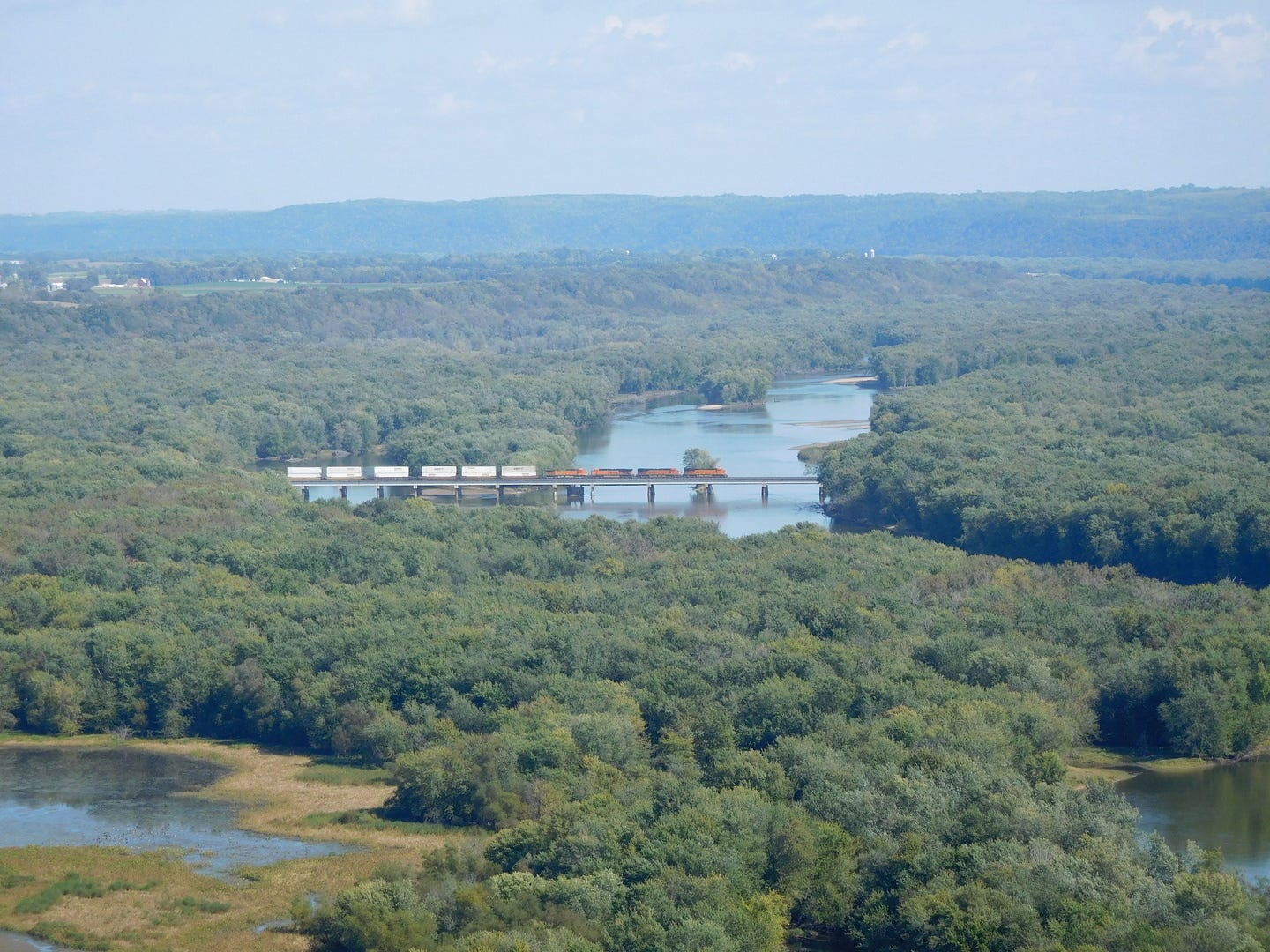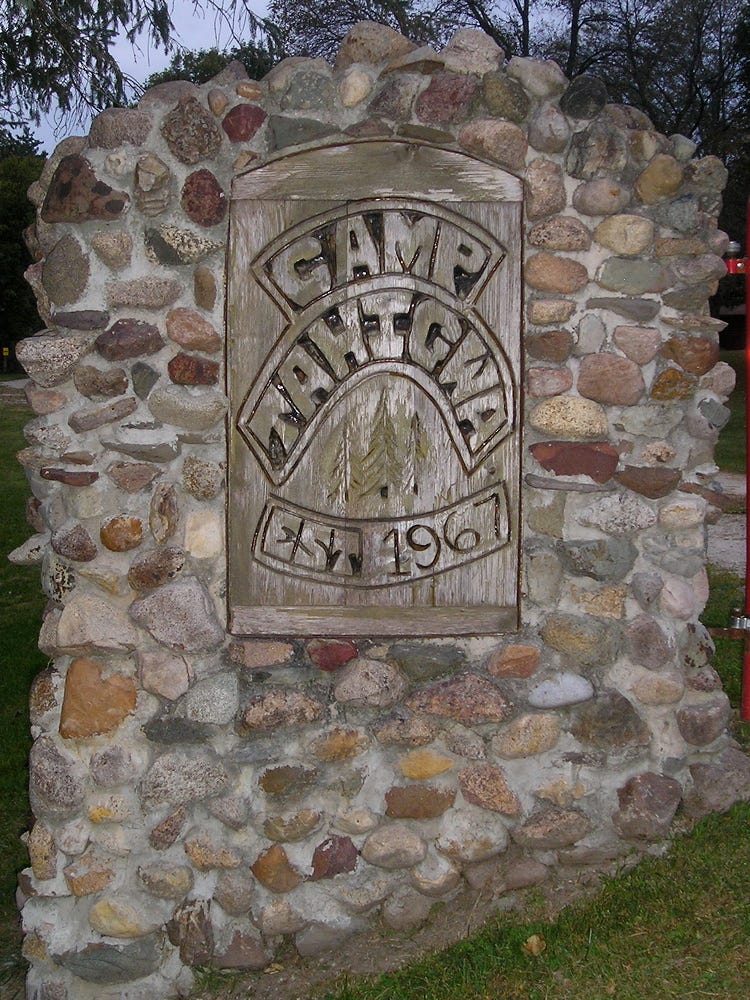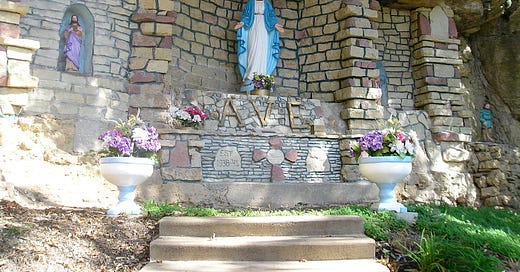Part of an intermittent series. Part 1 is here.
In this 2015 exploration of Iowa’s periphery, I didn’t want to linger at places I could easily return to. I had been to Dubuque months earlier, not just to visit the National Mississippi River Museum and Aquarium, but for “Titanic: The Artifact Exhibition.”
Longtime readers of my blog know that I am a huge Titanic buff. In fifth grade, I read Exploring the Titanic by Robert Ballard, the explorer who discovered the wreck in 1985. (In 2018, it was revealed that the search was used as a cover story for Ballard’s mission to find lost Navy submarines.) The symbolism of the disaster is as large as the ship itself. Opinions are divided over the morality of bringing up artifacts. To me, it restores a human scale to the 1,500 lives lost and 705 saved on the night of April 14-15, 1912.
It’s a beautiful drive, and I’m not bluffing
This day was spent entirely in northeast Iowa’s Driftless Area, known for geology and topography completely unlike the rest of the state. The glaciers missed the region, allowing the hills and ridges to remain as they had been for millions of years.
A short ways from Dubuque, Sherrill has a Y intersection at the Black Horse Inn, “one of four remaining pre-Civil War hotels in the State of Iowa.” Neither road had a marker for the Great River Road. As Yogi Berra said, when you come to a fork in the road, take it. I stayed to the outer one, and it was the right choice.
I considered an early dinner at Breitbach’s in Balltown, but it was closed Mondays (except in October), so I stopped at the scenic overlook and then continued.
North Buena Vista hugs the Mississippi River just south of the ferry to Cassville, Wisconsin. I saw a couple of men working on a grotto embedded in a bluff. I complimented them on the grotto, and then a woman came across the street to give me a booklet about it. I asked how the town’s name was pronounced. Its full name is pronounced with a Byoona, but “we usually call it Buenie” (Byoo-nie).
At the scenic overlook on US 52, women were selling honey and jams. I got samples, and then bought two jars of strawberry rhubarb for $12. You can’t go wrong with strawberry rhubarb.
In Guttenberg, Joe’s Pizza on the waterfront had an 8-inch size for $5.35 and then ice cream for $2.85. I leisurely finished my cone outside looking at the river and the historic downtown, featuring the flag of Imperial Germany.
It took going down a big hill to get to little Clayton along the river. Clayton’s school, built in 1860, is built of native limestone. According to a marker in the window, it didn’t get electricity until 1940 and indoor plumbing until 1957. It was used for a century and closed in 1963, three years after Clayton merged with Guttenberg.

Once I got to Marquette, I noticed that many things had changed since my last visit, including a combination city hall and Cobblestone Inn & Suites at the T intersection just north of the US 18 bridge. Between 1932 and 1974, traffic headed for Wisconsin would turn left here, then right at the school and up the bluff to the old bridge. Blackhawk Avenue in Prairie du Chien is the previous entrance on the other side. Before 1932, the only way to get across was via ferry.
After Harpers Ferry, a switch was flipped and the sky got overcast. I had pictures in Lansing from earlier in 2015, when a passing pickup driver yelled at me, “You start taking pictures around here, you’ll never stop.” As anyone who has driven through the Driftless Area can attest, he’s pretty wise.
I took pictures of the Black Hawk Bridge anyway, because it is so iconic. When it is replaced next year, its design will echo the 1931 structure.
Lansing and New Albin are Kee Hawk Country. The latter is home of Shooky Fink Field, well known to followers of Iowa high school baseball. The north edge of town is also the state line. A pullout on Highway 26 has informative panels about the Great River Road and an iron post from 1849 marking the border. In the Driftless Area, though, the roads know no lines, and getting to Eitzen, Minnesota, requires taking a winding road that wobbles between the states. Along the way is another boundary marker with information about the border survey, restored by the Allamakee County and Houston County engineers and sponsored by engineering and survey companies.
There were two more places with special significance that I wanted to see even though time was short: Camp Tahigwa and Locust School.

Camp Tahigwa was a casualty of the Girl Scouts of America’s nationwide reorganization in the late 2000s and early 2010s. The Conestoga Council, serving northeast Iowa, was consolidated with other councils to form the Girl Scouts of Eastern Iowa and Western Illinois. (Traer was on the southern edge of its area.) Tahigwa, six miles south of the state line, was non-centralized and deemed unnecessary.
In 2017, Tahigwa was turned over to the Iowa Department of Natural Resources through the Iowa Natural Heritage Foundation, “with the stipulation that the land be permanently maintained as a natural space for public use,” the Waukon Standard reported at the time. In 2018, Luna Valley Farm near Decorah posted on Facebook that it had acquired picnic tables and tents from the camp. The most recent information I could find was in January 2023 from Fly Fisherman magazine. John van Vliet wrote about exploring the Driftless Area, including a history of the region. A DNR hatchery biologist told him, “We haven’t really promoted the acquisition,” and structures on the property were being removed.
Locust School, built in 1854, is possibly the second-oldest extant (but not in use) school building in Iowa. Its historical marker, unfortunately, was outdated shortly after it was erected. Its 106 years of service were surpassed by Bellevue Elementary, which I had seen the day before, by 1970. In 2023 there are multiple school buildings from the 1910s and 1920s past or near that mark.
Incorporated communities visited: 12, 4 new (Sherrill, North Buena Vista, Osterdock, Clayton); 25 total
I am proud to be part of the Iowa Writers’ Collaborative. If you’re interested in commentary by some of Iowa’s best writers, please follow your choice of Collaborative members:






"It’s a beautiful drive, and I’m not bluffing" 😆 I see what you did there!
👍